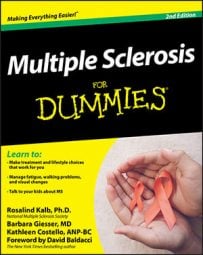Gilenya (fingolimod) — the first oral medication for the treatment of multiple sclerosis (MS) — has been shown in clinical trials to reduce the frequency of clinical relapses, to delay the accumulation of physical disability, and to reduce brain lesion activity as shown on MRI. In a study comparing Gilenya with the injectable Avonex, Gilenya was more effective than Avonex in reducing the frequency of relapses and reducing disease activity as measured by lesion activity on MRI.
The FDA approved it in 2010 to treat relapsing forms of MS. Gilenya, which comes in capsule form, is taken once a day. Gilenya is a new class of medication called a sphingosine 1-phosphate receptor modulator. Researchers think it works by trapping certain white blood cells (lymphocytes) in the lymph nodes so that they can’t cross the blood-brain barrier into the CNS to cause damage to the nerve cells.
Swallowing a capsule is definitely easier and more convenient than doing an injection. But you need a little more information before you jump to any hasty conclusions. Following are the findings from the clinical trials about the possible side effects of Gilenya and about the precautions you and your doctor need to take with this medication.
(Of course, more information about the possible benefits and side effects of this medication will become available over time as large numbers of people with MS use it.)
Side effects: The most common side effects seen in the clinical trials of Gilenya were headache, influenza, diarrhea, back pain, abnormal liver tests, and cough. Less common side effects included a slowed heart rate following the first dose, infections, and swelling of the macula in the eye.
Precautions recommended by the FDA: Based on the results of the clinical trials with Gilenya, the FDA has recommended several steps to protect you:
If you haven’t had chicken pox, your doctor may recommend that you get the varicella vaccine before starting this medication.
Because Gilenya can cause your heart rate to drop, you’ll be observed for six hours in the doctor’s office after taking the first dose. The drop in heart rate, which reaches its lowest point within six hours, generally returns to normal within one month.
Because Gilenya reduces the number of white blood cells in your body, it increases your risk of infection. Your doctor may give you a blood test prior to starting the medication to measure your white blood cell count and repeat the test occasionally.
Because Gilenya can cause swelling of the macula at the back of the eye — referred to as macular edema — an eye exam is recommended prior to starting treatment, and two to three months later to look for swelling.
Because this medication can affect the functioning of the liver, your doctor will probably recommend a liver function test prior to starting treatment and repeat the test occasionally.

